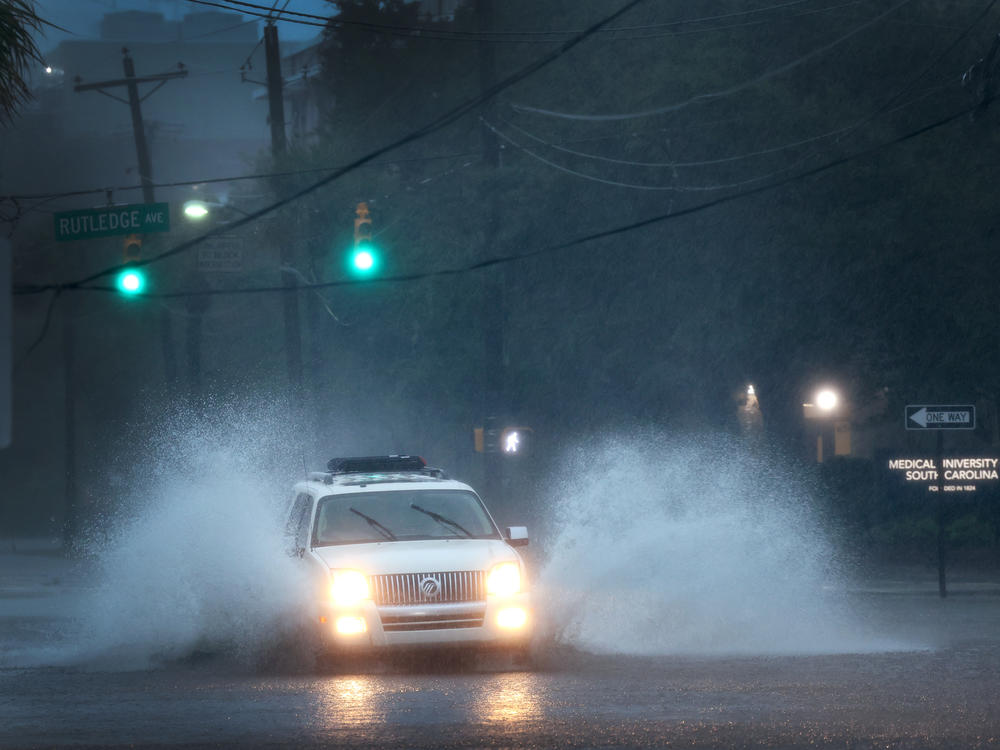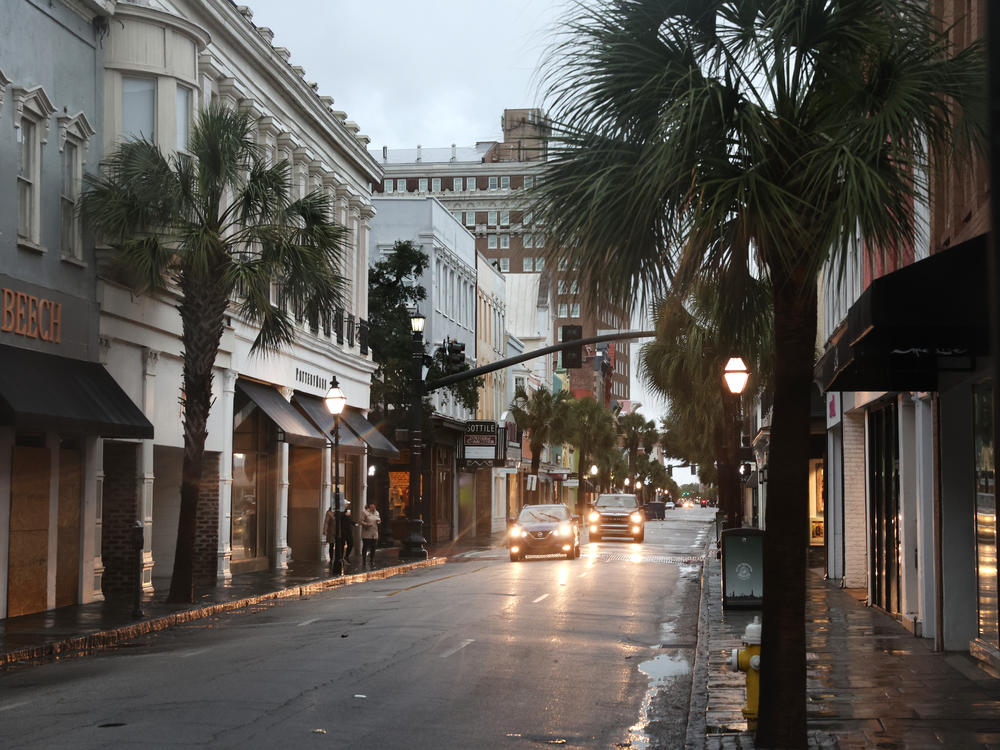Section Branding
Header Content
Ian makes landfall in South Carolina, flooding beaches and roads
Primary Content
Updated September 30, 2022 at 5:58 PM ET
Ian is creating chaos along the South Carolina shore, where it made landfall south of Georgetown as a Category 1 hurricane Friday afternoon. The town is about 60 miles northeast of Charleston.
As it arrived, Ian was flooding beach areas and residential neighborhoods with storm surges and massive rainfall, sending seawater flowing over roads. Ian was later downgraded to a post-tropical cyclone. Power outages affected more than 170,000 customers in South Carolina Friday evening.
"The flooding has been catastrophic," the Pawleys Island Police Department said via Twitter, as it posted several videos showing shocking amounts of flooding. In one sequence, the driver of a rescue vehicle is heard asking where to turn — trying to follow roads hidden by rough, deep water.
As of 2 p.m. ET, Ian was carrying maximum sustained winds of 85 mph, the National Hurricane Center said. In a sign of the many threats posed by Ian, the state of South Carolina was under more than 85 weather warnings, watches and alerts as of 2 p.m.
Police in Horry County, which includes Myrtle Beach, posted video of the ocean rushing toward streets from access paths in Garden City, along with torrential rain and flooded roads. The agency is urging anyone in the area to stay off the roads.
A local TV news crew captured the scene of high water rippling along a causeway nearby.
Hours before its center reached shore, Ian had already forced road closures in Charleston's historic downtown, and winds near the city were gusting at hurricane speeds.
The damage done in South Carolina is the latest impact of the storm that inundated wide sections of the Florida peninsula — and Ian is expected to bring power outages and flooding to South Carolina and southeastern North Carolina.
Ahead of Ian's arrival, a hurricane warning covered all of the South Carolina coast and part of the North Carolina shore up to Cape Fear.
Late Friday morning, an ocean weather buoy 41 nautical miles southeast of Charleston recorded waves as tall as 21 feet, the National Weather Service said. Earlier this week, no waves at the buoy measured higher than 4 feet.
Coastal communities again brace for Ian's storm surge
Forecasters had warned that a large swath of the coast in South Carolina and North Carolina could see storm surge waters reach 6 feet above ground, with more than 9 feet possible in some spots.
Charleston County, which includes around 100 miles of coastline, declared an emergency on Thursday and opened shelters for people who want to sit out the storm in safe spaces and on higher ground. But the county had to halt bus service to shelters on Thursday, when high winds made those trips risky.
Just north along the coast, Georgetown County urged people in flood-prone areas to keep an eye on weather warnings — but in contrast to Charleston, the county said on Thursday that it had no plans to open shelters. It also eschewed other steps such as offering sandbags, saying people can buy them at stores.
"Widespread areas will suffer from power and communication outages," the NWS office in Wilmington, N.C., said. It expects other impacts to range from trees snapped off or uprooted, debris blocking roads and bridges and high roads becoming unsafe.
Flooding started in the predawn darkness
Much of the Charleston metro area began the day Friday under a flash flood warning that was issued around 6 a.m. ET — hours before the hurricane was expected to bring its storm surge.
Flooding fro heavy rain triggered road closures around the city, from the central intersection of Huger and King streets to roads along the waterfront.
"We urge only essential travel," the police department said.
In downtown Charleston, some roads started flooding before dawn, as Ian's heavy rain bands dropped 1 to 2 inches of water on the city, according to the National Weather Service office in Charleston. Another 2 to 6 inches of rain could fall, it warned.
Flash flooding was expected to hit a number of popular tourist areas, such as Folly Beach to Sullivans Island and Isle of Palms. Further inland, floods will also likely hit North Charleston, the office said.
Copyright 2022 NPR. To see more, visit https://www.npr.org.


